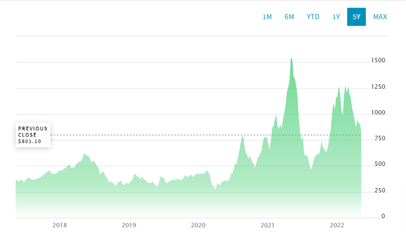Why All The Recent Noise About Interest Rates?
 Interest rates and inflation will continue to be hot topics for the foreseeable future. That’s because in the eyes of many, the Federal Reserve (the Fed for short) and current administration coupled accommodative monetary policy (low interest rates) with massive fiscal stimulus to deal with the impacts of COVID to the economy. This combination has intensified supply chain issues, extended labor shortages and increased energy prices. Now the Fed is playing catch-up to try to maintain economic growth, while at the same time attempting to temper inflation. This is an extremely delicate balancing act to accomplish without driving the country into recession.
Interest rates and inflation will continue to be hot topics for the foreseeable future. That’s because in the eyes of many, the Federal Reserve (the Fed for short) and current administration coupled accommodative monetary policy (low interest rates) with massive fiscal stimulus to deal with the impacts of COVID to the economy. This combination has intensified supply chain issues, extended labor shortages and increased energy prices. Now the Fed is playing catch-up to try to maintain economic growth, while at the same time attempting to temper inflation. This is an extremely delicate balancing act to accomplish without driving the country into recession.
The Fed’s primary tool to reduce inflation is to increase the short-term federal funds rate. The federal funds rate is the rate banks charge each other to borrow money overnight. As the federal funds rate increases, it makes it challenging for banks to offer low loan rates. Higher loan rates typically equate to less borrowing from businesses and consumers, which translates to lower consumption and consumer spending. In a perfect world this tactic helps balance supply and demand to stabilize prices. However, given the current rate of inflation, it seems the Fed should have been raising rates gradually over the past year vs. such a rapid velocity. Only time will tell how their strategy will unfold.
On May 4, 2022, it was the first time in 16 years that the federal funds rate was raised in consecutive Fed meetings. It was also the first time in 22 years that the Fed increased the rate by 0.50% in a single meeting. It’s expected they will continue to raise the federal funds rate in most (if not all) of the remaining five meetings this year.
So how will this impact most everyday bank customers?
For loans, it depends. Customers with certain variable rate loans and lines of credit, including most credit cards (which Osgood does not issue directly) will see their rates increase immediately. Those with existing fixed rate loans, like most mortgages, will benefit. Many customers with fixed-rate home loans have locked-in historically low rates (some below 3%) for thirty years. These homeowners will likely never see a lower rate than they have currently.
On the flip side, buyers and builders of new homes will have sticker shock. Mortgage rates are now over 5% for the first time in recent memory and the cost of raw materials and labor for new builds have increased significantly.

For example, although lumber prices are down from their peak a year ago, they are still highly volatile and twice as expensive as pre-COVID. As of May 5, 2022 lumber prices exceeded $1,000 per 1000 board feet as compared to about $400 pre-pandemic.
(Image source: Nasdaq)
What about Deposit rates? On a positive note for savers, deposit rates are projected to increase over the next 12-24 months. That said, there are a lot of factors to consider when setting deposit rates other than the federal funds rate. In the next two years, short-term interest rates (less than 30 days) are projected to increase rapidly, but longer-term rates (terms out to 30 years) are expected to flatten. In fact, some are predicting that short-term rates may get higher than long-term rates. This dynamic is called an “inverted yield curve” and it has been historically viewed by economists as an early warning indicator for a recession.
What is Osgood Bank doing about it?

At Osgood, we have a pricing committee that meets regularly to ensure competitive rates with other local banks and credit unions. Although the short-term federal funds rate is most often discussed in the news, in many instances, it’s longer-term rates (such as the 2, 5 and 10 year Treasuries) that play a much larger factor in setting rates across the board for loan and deposit rates – including longer term certificates of deposit (CDs).
CDs offered by investment companies typically have more sophisticated and potentially punitive terms for the customer, so if you consider moving money to institutions like these, please talk with us first. We can help you sort through the fine print to ensure you’re making a good decision.
In summary, regardless of how volatile interest rates are over the next year or two, your team at Osgood Bank is here to help manage through this confusing time together.